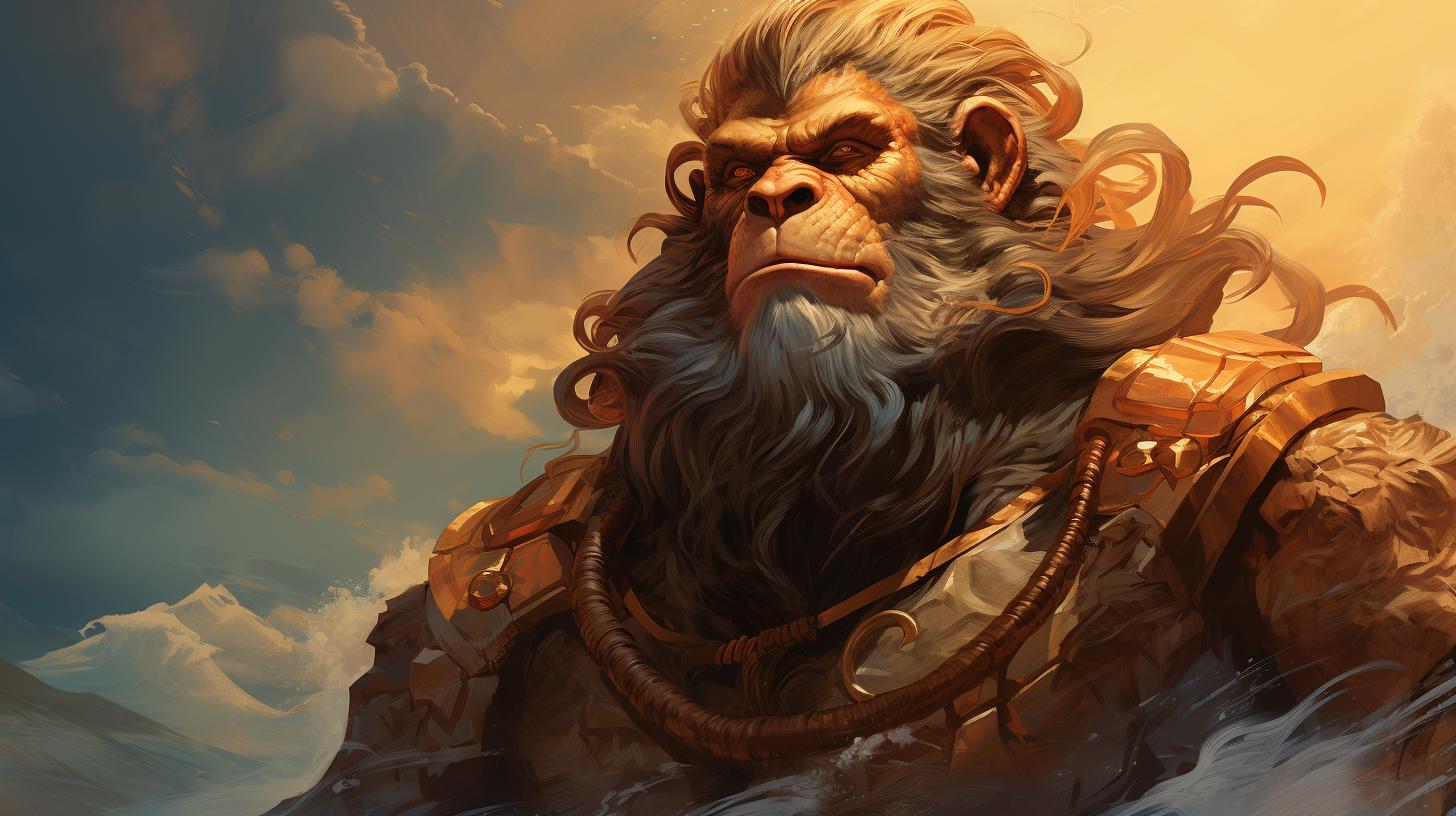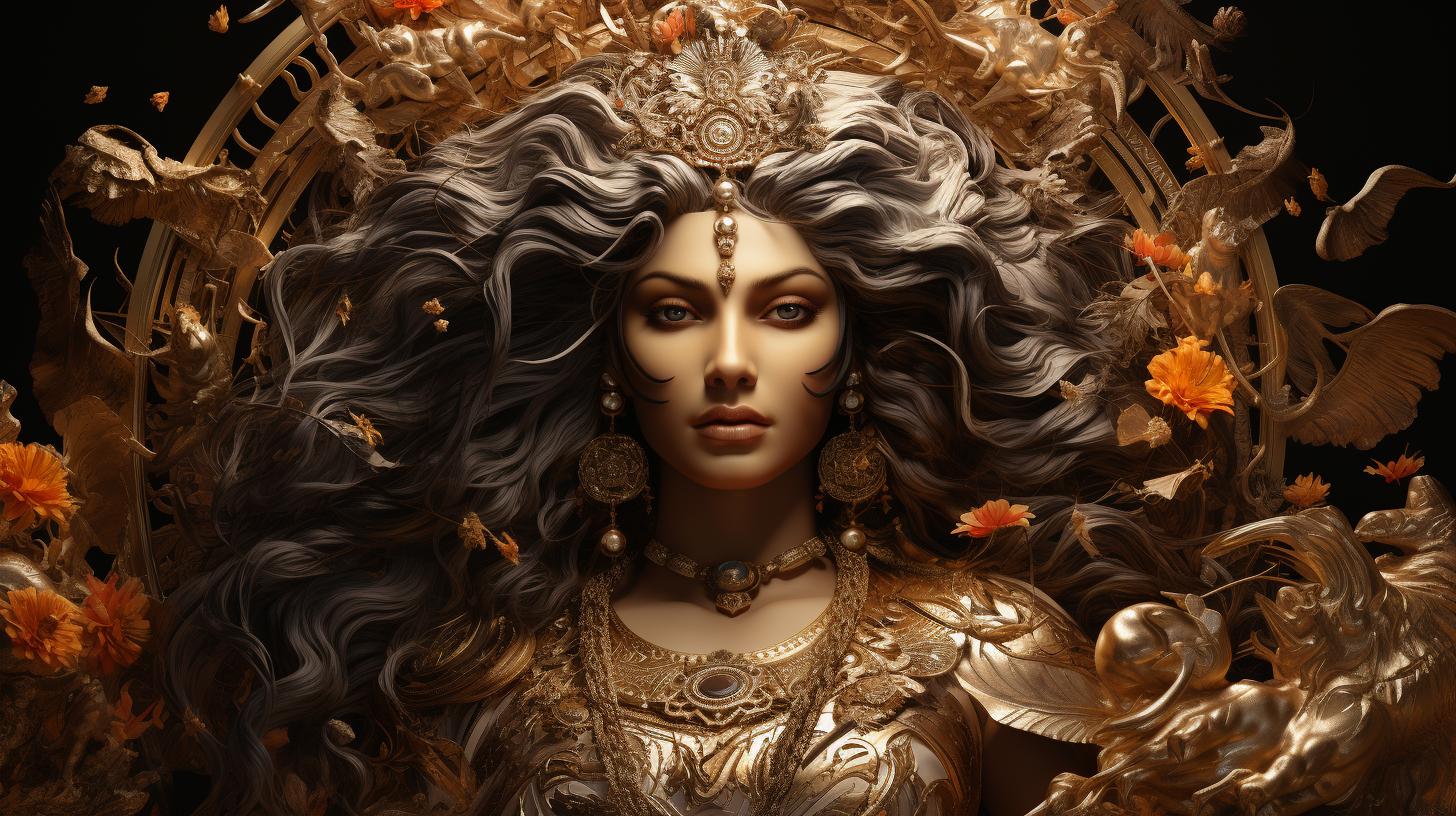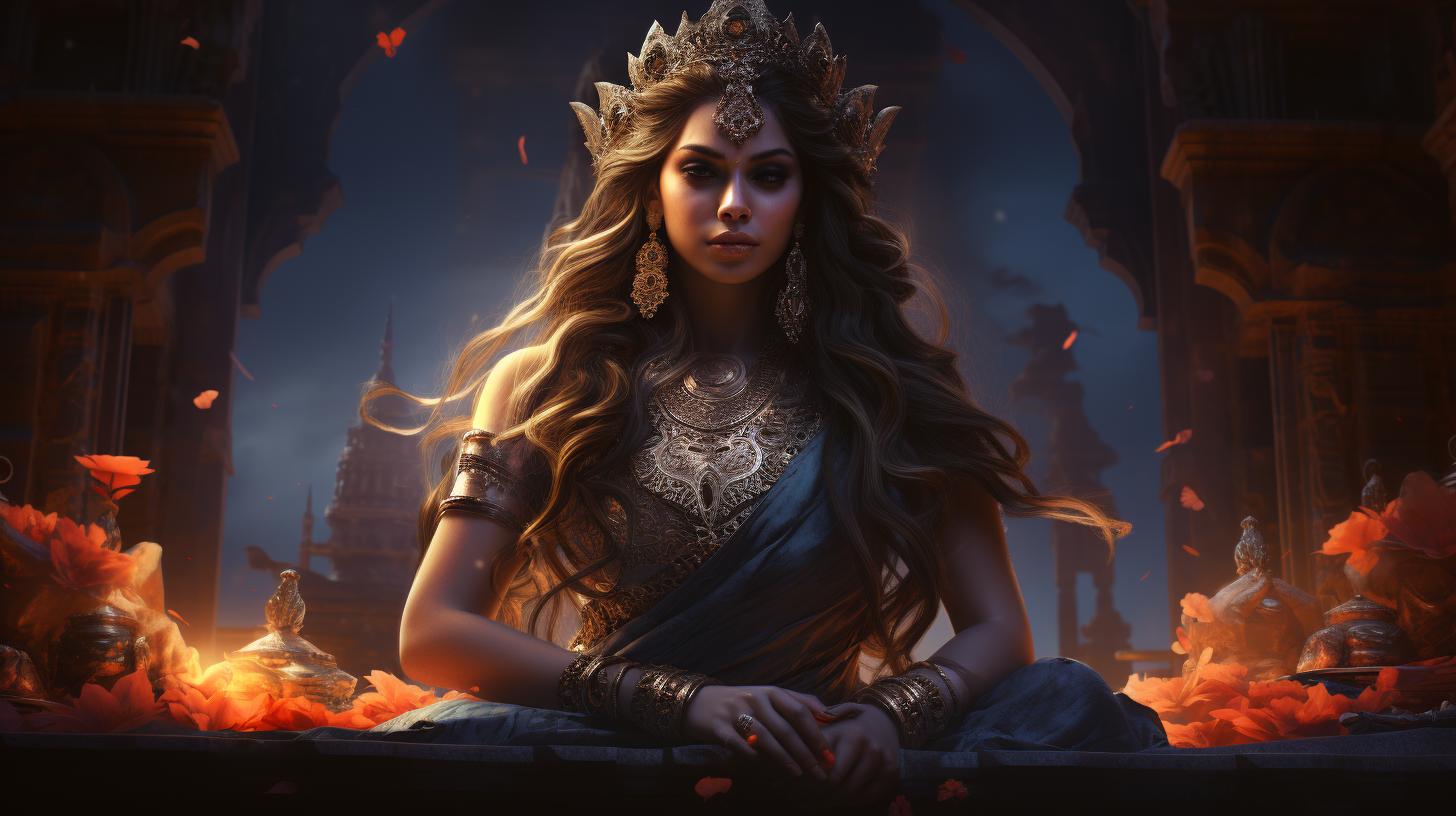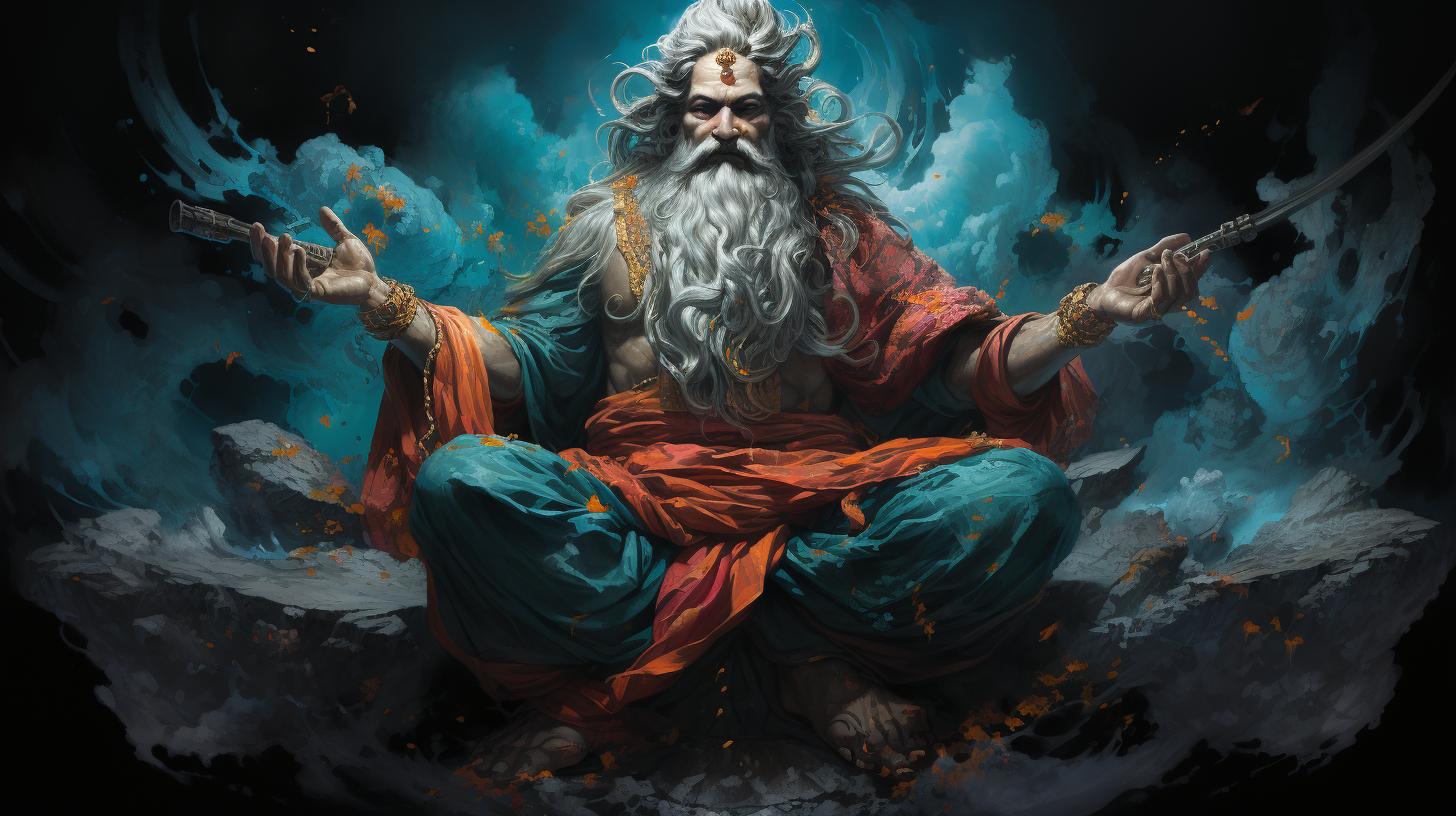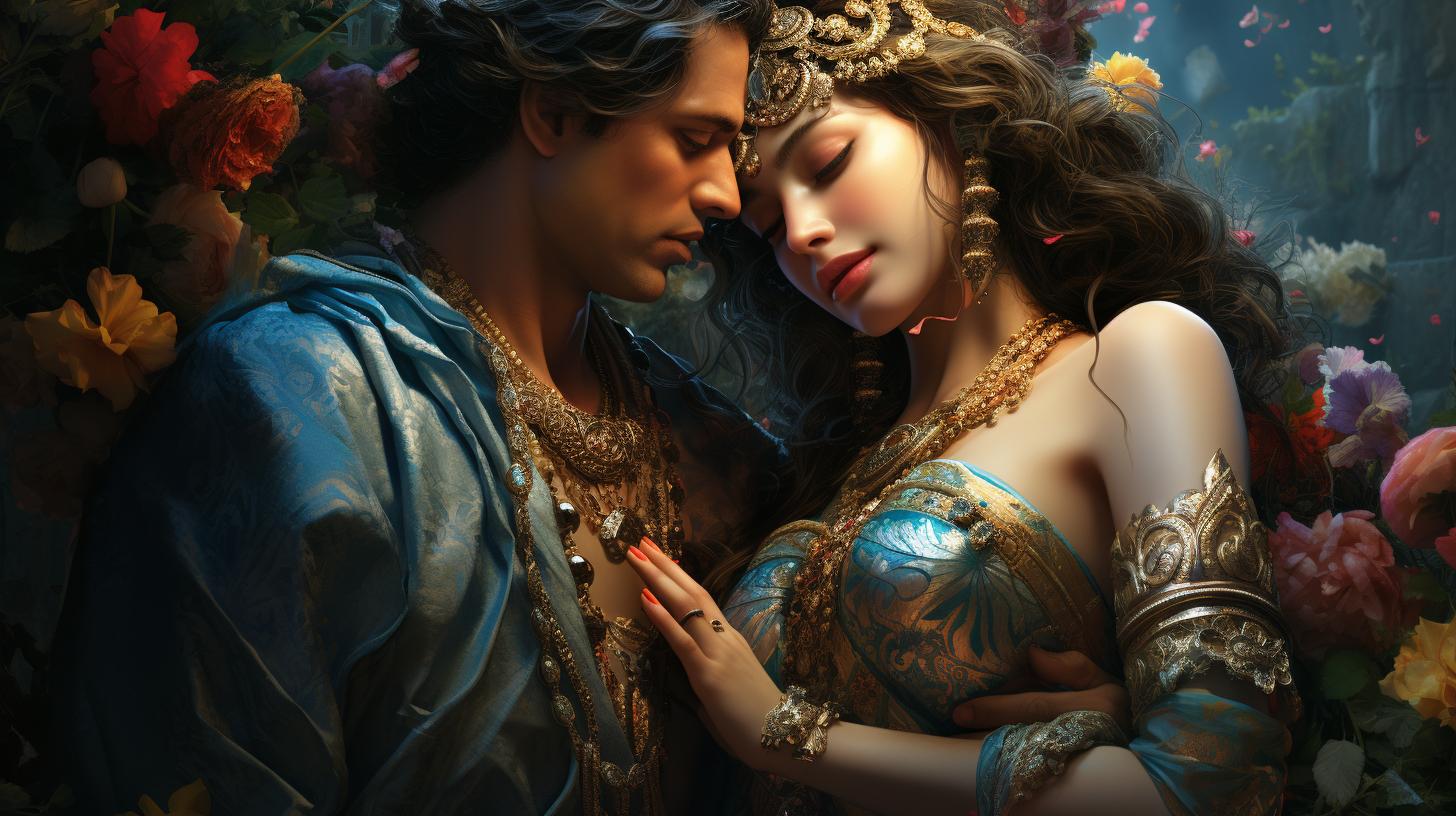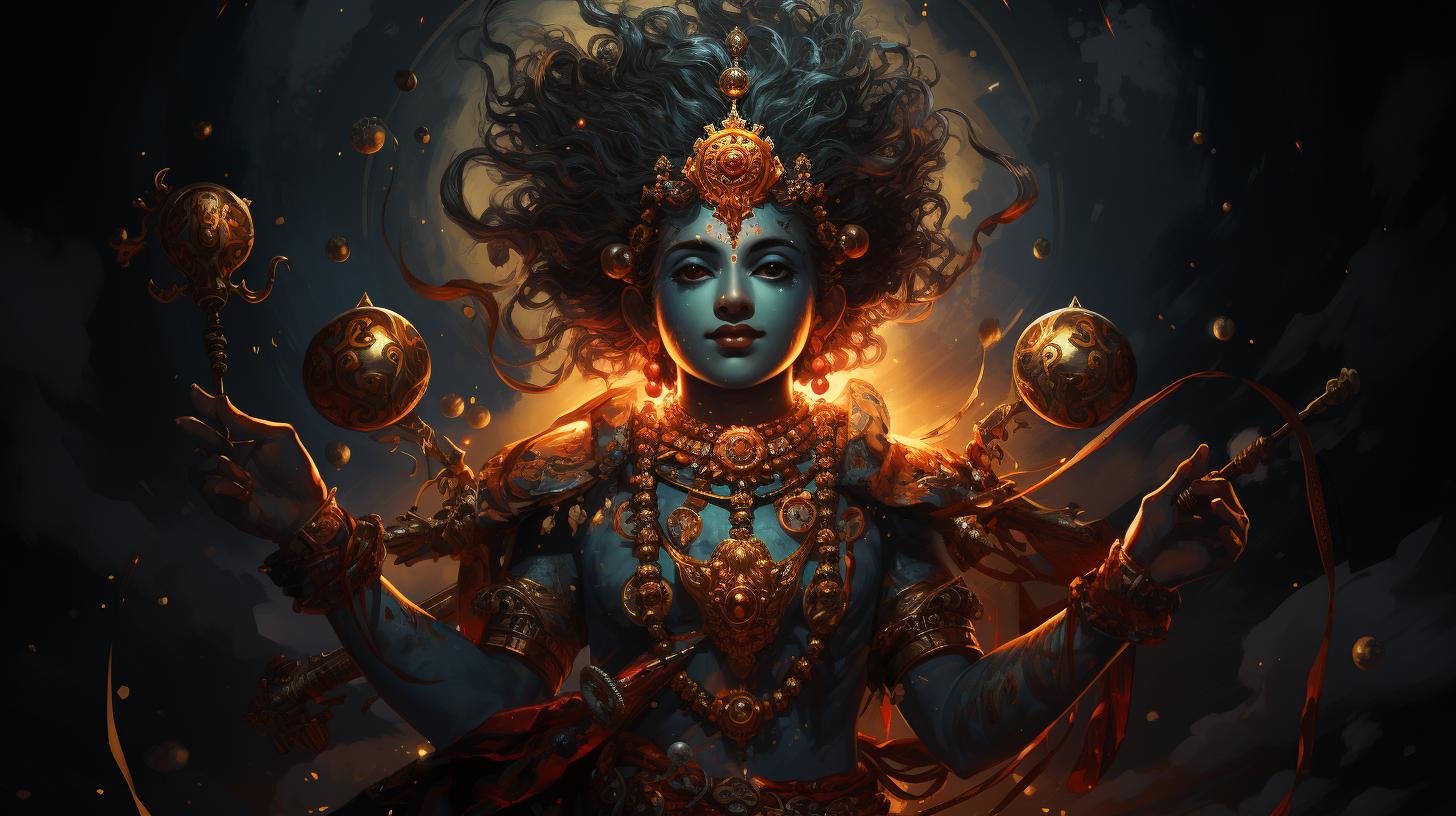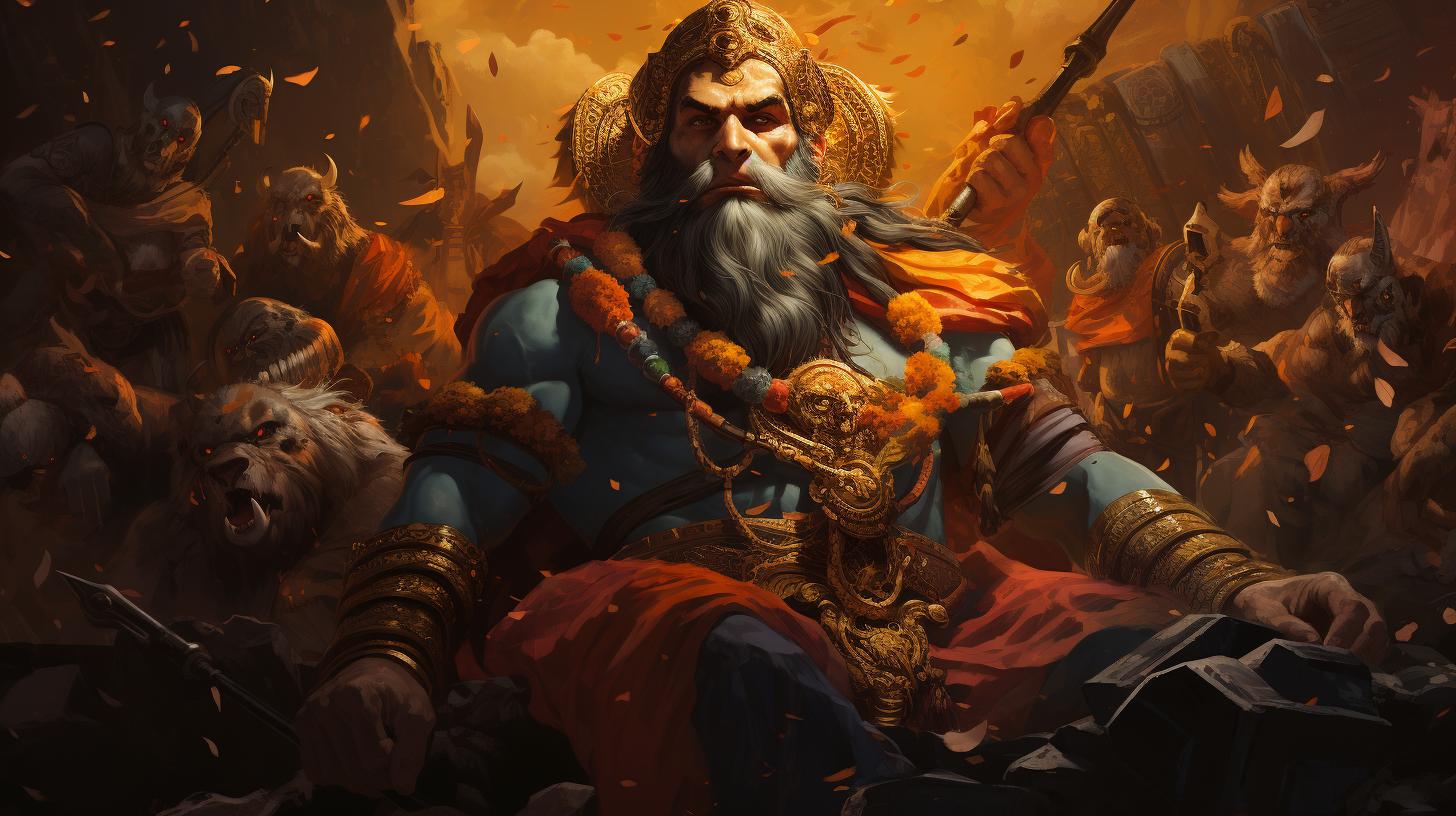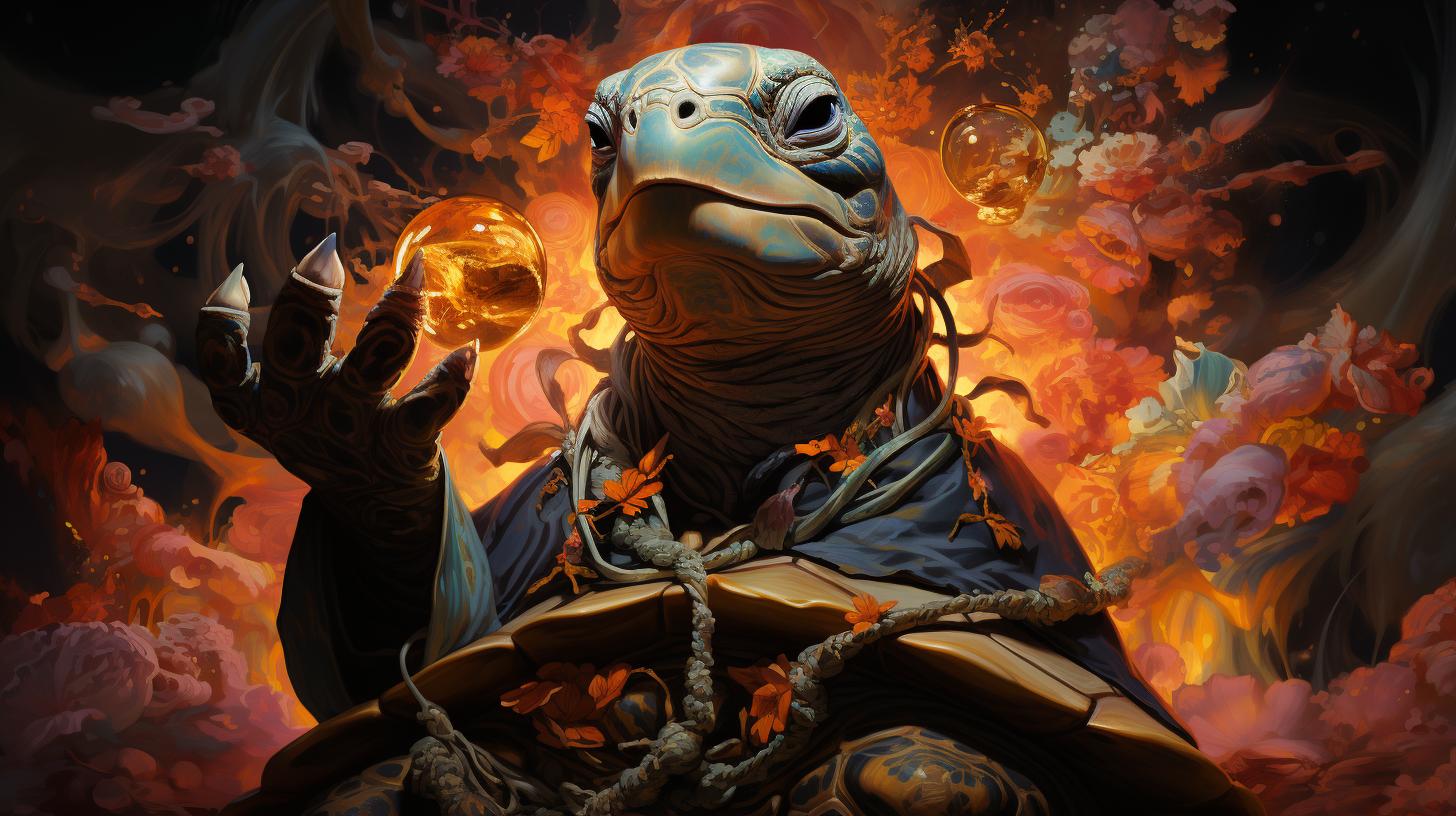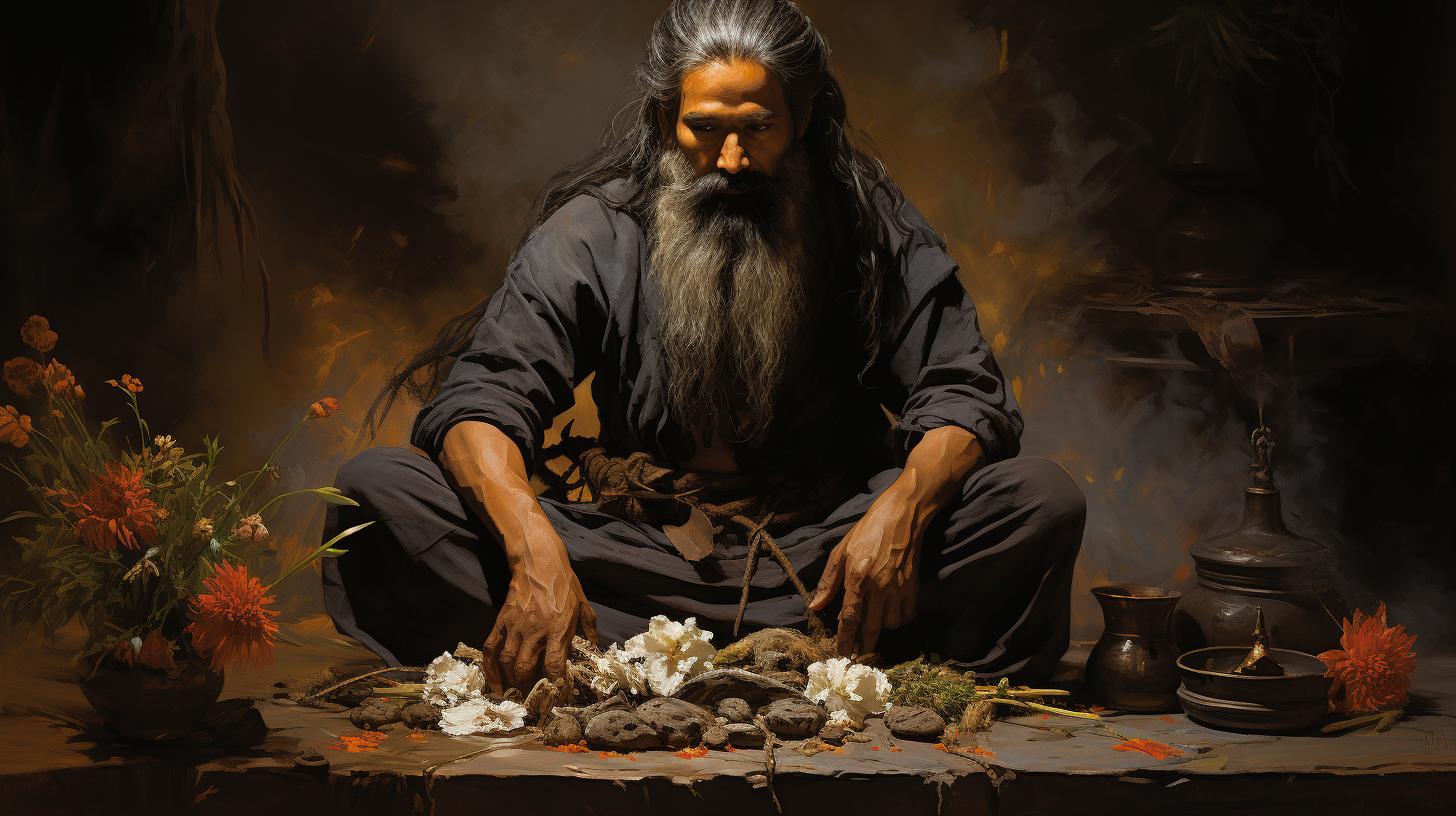The Epic Story of Hanuman: An Enthralling Tale of the Indian Monkey God
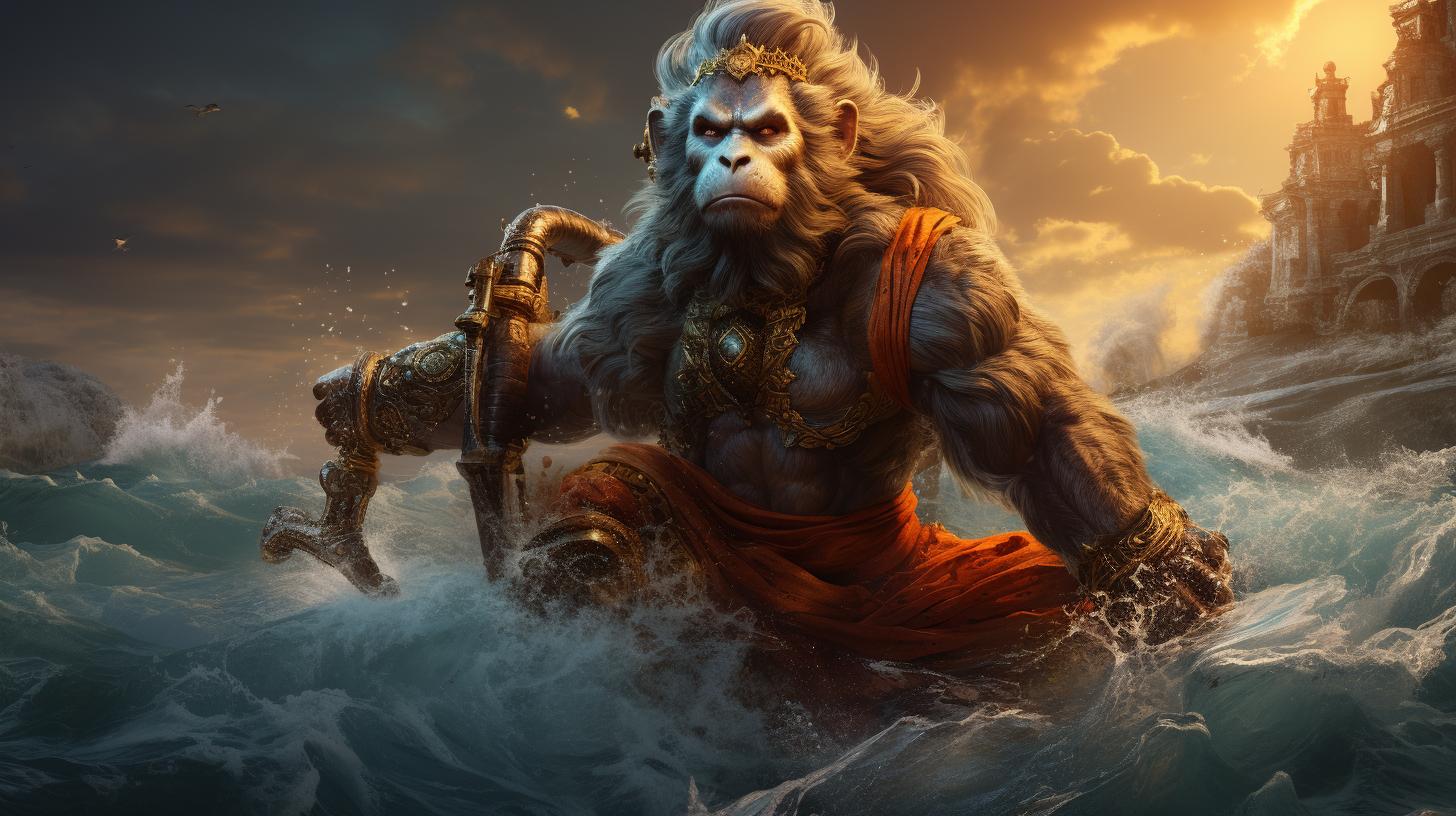
The story of Hanuman, the legendary Indian monkey god, is deeply rooted in Hindu mythology. Hanuman’s origin lies in the epic Ramayana, where he showcased extraordinary powers and unwavering devotion to Lord Rama. As a key figure in the search for Sita and the battle against demons in Lanka, Hanuman’s heroic acts have captivated audiences for centuries.
Revered in Indian temples and celebrated as a symbol of strength and loyalty, Hanuman continues to have a profound cultural significance in India and beyond. Let’s delve into the fascinating tale of Hanuman’s divine journey.
The Mythological Origins of Hanuman
The story of Hanuman begins with his mythological origins, rooted in ancient Hindu scriptures and folklore. The divine lineage of Hanuman can be traced back to his parents, Vayu and Anjana.
The story of Vayu and Anjana
According to Hindu mythology, Vayu, the wind god, and Anjana, a celestial nymph, were blessed with a divine child who would possess extraordinary powers. Vayu, with his immense strength and Anjana’s grace, conceived Hanuman, the monkey god.
Hanuman’s extraordinary powers and his childhood incident
From a young age, Hanuman exhibited extraordinary abilities and was considered invincible. Legend has it that Hanuman mistook the sun for a ball during his childhood and attempted to capture it.
This incident led to an encounter with Indra, the king of gods, who attacked Hanuman with his powerful thunderbolt, injuring him. As a result, Hanuman was cursed to forget his powers until someone reminded him of them.
Despite this curse, Hanuman grew up to be a formidable force, both physically and intellectually. His incredible strength, agility, and unwavering devotion made him an indispensable ally in the epic Ramayana and subsequent Hindu scriptures.
In Summary
The mythological origins of Hanuman lie in the divine lineage of Vayu and Anjana. From his birth, Hanuman possessed extraordinary powers, but his childhood incident and subsequent curse played a significant role in shaping his divine journey.
As a leader, he spearheaded the search for Sita, the wife of Lord Rama, when she was abducted by the demon king Ravana and taken to Lanka.
Hanuman’s leadership in the search for Sita
Driven by unwavering devotion, Hanuman fearlessly led a group of monkeys in search of Sita. His remarkable intelligence and boundless energy guided them through treacherous forests and mountains, leaving no stone unturned in their quest to find her.
With his extraordinary powers, he traversed vast distances, leaping across oceans and encountering various challenges along the way.
Hanuman’s encounters with demons in Lanka
Upon reaching Lanka, Hanuman faced formidable demons who guarded Sita in Ravana’s palace. Fearlessly, he single-handedly defeated them, displaying his immense strength and agility. His encounters showcased his valor and determination to fulfill his divine mission.
Hanuman’s fearless acts inspired awe and admiration among gods and mortals alike.
Hanuman’s retrieval of the Sanjeevani herb
During the ensuing battle between Rama’s army and Ravana’s forces, Rama’s brother Lakshmana was gravely injured. In a desperate bid to save him, Hanuman embarked on a perilous mission to bring the life-saving Sanjeevani herb.
He successfully retrieved the herb from the Himalayas, covering vast distances within a limited time. His swift action and unwavering commitment were instrumental in saving Lakshmana’s life, earning him immense respect and gratitude.
Hanuman’s role in the Ramayana showcases his exceptional qualities as a leader, warrior, and devotee. His unwavering loyalty to Lord Rama and his selfless dedication in rescuing Sita make him a revered figure in Hindu mythology.
Hanuman’s exploits continue to inspire people with his courage, strength, and unwavering devotion.
Hanuman’s Devotion to Rama
Within the realm of Hindu mythology, the unwavering devotion of Hanuman to Lord Rama is an awe-inspiring tale. Hanuman’s loyalty after the war between Rama and Ravana is a testament to his deep reverence for his chosen deity.
Following the triumphant outcome of the war, Hanuman’s loyalty to Rama remains steadfast. He continues to serve and accompany Rama in his rule as the rightful king of Ayodhya.
Hanuman’s devotion goes beyond mere duty; it is a reflection of his profound love, respect, and unwavering faith in Rama’s divinity. He stands as a symbol of undying devotion for the thousands who revere him.
Hanuman’s revered status in Indian temples
In temples across India, Hanuman is held in high regard and worshipped with deep reverence. His image, often depicted with a mace in his hand and a humble posture, inspires devotion and devotion in his followers.
Visitors flock to Hanuman temples seeking blessings, protection, and spiritual solace. Hanuman’s presence in these places of worship is a reminder of his divine qualities, with devotees seeking inspiration from his unwavering dedication to Lord Rama.
Through his acts of bravery and relentless devotion, Hanuman has earned a revered status in the hearts of millions, solidifying his importance in the rich tapestry of Hindu culture and spirituality.
The Significance of Hanuman in Hindu Culture
Hanuman holds a deep and profound significance in Hindu culture, encompassing various aspects that make him a revered deity. Let’s explore the different dimensions of Hanuman’s significance:
Hanuman as a Model of Devotion
Hanuman’s unwavering devotion to Lord Rama makes him an exemplary model of devotion in Hindu culture.
He showcases profound love, loyalty, and selflessness in his service towards his beloved lord. Hanuman’s dedication serves as an inspiration for devotees to cultivate unwavering devotion in their own spiritual journeys.
Hanuman’s Association with Other Hindu Deities
In Hindu mythology, Hanuman is closely associated with several other deities. He is considered an incarnation of Lord Shiva and a devout devotee of Lord Rama, an avatar of Lord Vishnu. Hanuman’s connection with these divine beings further enhances his significance in Hindu culture, symbolizing the interconnectedness and unity of the Hindu pantheon.
Hanuman’s Worship and Celebrations in India and Beyond
Hanuman is revered and worshipped in temples throughout India and in various parts of the world. Devotees observe Tuesdays and Saturdays as special days dedicated to Hanuman, where they offer prayers, chant hymns, and seek his blessings.
Hanuman Jayanti, his birth anniversary, is enthusiastically celebrated with processions, devotional songs, and recitations of the Hanuman Chalisa, a sacred hymn dedicated to Hanuman.
In addition to this, Hanuman is an integral part of religious festivals such as Diwali, where his effigies are prominently displayed and worshipped.
The grand celebrations and rituals associated with Hanuman instill a sense of religious fervor and spiritual connection among the devotees.
Hanuman’s significance in Hindu culture extends far beyond his divine attributes.
He embodies the ideals of devotion, selflessness, and loyalty, inspiring millions of people to lead a righteous and dedicated life. As Hanuman continues to be celebrated and revered in temples, festivals, and households, his influence on Hindu culture remains profound.
Exploring Hanuman’s Divine Attributes
Within Hindu mythology, Hanuman is revered for his divine attributes and deep spiritual connections. This section delves into two key aspects of Hanuman’s character:
Hanuman’s alignment with Lord Vishnu
Hanuman is widely recognized as an ardent devotee of Lord Vishnu, one of the principal deities in Hinduism. His unwavering devotion to Lord Vishnu forms a central part of his divine attributes.
Hanuman’s love and loyalty towards his chosen deity are unmatched, making him a symbol of unwavering faith and devotion.
Throughout his incredible journey, Hanuman consistently sought to serve and please Lord Vishnu. His connection with Lord Vishnu lays the foundation for his role in the epic Ramayana and other Hindu scriptures.
Hanuman’s connection to the Ramayana and other Hindu scriptures
As a pivotal character in the Ramayana, Hanuman’s actions and decisions shaped the course of the epic. His unwavering commitment to Lord Rama, an incarnation of Lord Vishnu, propelled him to play a crucial part in the search and rescue of Goddess Sita.
Hanuman’s heroic adventures showcased in the Ramayana have not only made him a beloved figure but have also contributed to his prominence in various other Hindu scriptures.
He is often revered as an embodiment of righteousness, courage, and devotion in these sacred texts.
Moreover, Hanuman’s connection to the Ramayana signifies his role in larger narratives of dharma (duty), righteousness, and the triumph of good over evil.
His selflessness and dedication serve as inspiring lessons that resonate in Hindu teachings and philosophical discussions.
- Significant points of Hanuman’s alignment with Lord Vishnu:
- Symbol of unwavering faith
- Demonstration of loyalty and devotion
- Inspiring example of service and selflessness
- Key aspects of Hanuman’s connection to the Ramayana and other Hindu scriptures:
- Crucial role in the search and rescue of Goddess Sita
- Representation of righteousness, courage, and devotion
- Influence on larger concepts of dharma and good versus evil
These divine attributes highlight Hanuman’s spiritual significance and his enduring influence within Hindu culture and mythology.
Tracing Hanuman’s Impact on Indian Folklore and Literature
Tracing the impact of Hanuman on Indian folklore and literature unveils a rich tapestry of stories and traditions that have captivated generations. Within the epic Valmiki Ramayana, Hanuman emerges as a charismatic figure, embodying unwavering loyalty and immense physical prowess.
Renowned as Rama’s most trusted ally, his portrayal in Valmiki’s seminal work solidifies his status as a symbol of devotion and righteousness.
Hanuman’s portrayal in the Valmiki Ramayana
In the Valmiki Ramayana, Hanuman’s character takes center stage, enlivening the narrative with his extraordinary exploits and unwavering devotion. His pivotal roles in aiding Rama’s search for Sita, his daring leap across the ocean, and his valiant battles against formidable adversaries make him an integral part of the epic saga.
Valmiki skillfully crafts Hanuman’s portrayal, highlighting his wit, intelligence, and selflessness, making him a beloved character in Indian folklore and literature.
Hanuman’s representation in regional folklore and traditions
Beyond the Valmiki Ramayana, Hanuman’s influence reverberates through diverse regional folklore and traditions. In different parts of India, local variations of the Ramayana celebrate Hanuman’s heroism, emphasizing his role as a savior and protector.
Folk songs, dance-dramas, and oral storytelling traditions have kept the tales of Hanuman alive, captivating audiences with his remarkable feats and unwavering commitment.
In regional traditions, Hanuman often assumes a more prominent position, receiving specific forms of worship and reverence.
For instance, in Kerala’s Theyyam rituals, Hanuman embodies the essence of valor and benevolence, with dancers donning vibrant costumes and masks representing the deity. In Maharashtra, the festival of Hanuman Jayanti brings communities together in vibrant processions and devotional gatherings.
Furthermore, various local legends and folktales attribute miraculous episodes to Hanuman, expanding upon his divine attributes and providing a deeper understanding of his symbolism. These tales serve as a testament to the enduring and evolving nature of Hanuman’s presence in Indian folklore and literature.
- Theyyam rituals in Kerala celebrate Hanuman’s heroism through traditional dance and performance
- The festival of Hanuman Jayanti in Maharashtra brings communities together in devotional celebrations
- Local legends and folktales attribute miraculous episodes to Hanuman, enriching his divine persona in regional traditions
The impact of Hanuman in Indian folklore and literature is a testament to the enduring fascination surrounding this beloved deity.
As his heroic tales continue to inspire and captivate, Hanuman’s presence in regional traditions and oral narratives ensures that his legacy remains deeply woven into the cultural fabric of India.
Understanding Hanuman’s Cultural Significance in India
When it comes to the cultural landscape of India, Hanuman holds a significant place as a revered deity.
His influence transcends religious boundaries and permeates various aspects of Indian society. Let’s explore the profound cultural significance of Hanuman in India.
Hanuman’s Influence on Indian Art, Music, and Dance
The awe-inspiring tales of Hanuman’s devotion and heroism have inspired artists, musicians, and dancers in India for centuries.
Hanuman’s portrayal in traditional and contemporary art forms showcases his vibrant personality and divine attributes. His image adorns countless paintings, sculptures, and murals, captivating the artistic imagination.
Furthermore, Hanuman’s tales have served as a muse for Indian classical music.
Melodies and devotional hymns dedicated to Hanuman resonate in temples, concerts, and cultural events across the country. His presence is vividly expressed through powerful vocals and intricate musical compositions.
Dance forms such as the Hanuman Tandava and Hanuman Nritya showcase his dynamic energy and mythological legends.
Traditional dance practitioners invoke Hanuman’s spirit through graceful movements and expressions, captivating audiences with his tales of valor.
Hanuman as a Symbol of Strength, Loyalty, and Devotion
Hanuman personifies strength, unwavering loyalty, and unyielding devotion. Considered a symbol of divine protection, his image often adorns homes and vehicles to ward off evil and bring blessings. Hanuman’s unwavering dedication to Lord Rama serves as a reminder of the power of faith and loyalty in the face of challenges.
Individuals seeking strength and courage often turn to Hanuman as a source of inspiration. His teachings and virtues are cherished, instilling a sense of belief and determination in the hearts of his devotees.
Hanuman’s influence extends beyond religious boundaries, serving as a symbol of inspiration for people of all backgrounds.
Hanuman’s Role in Religious Festivals and Rituals
Hanuman occupies a prominent place in religious festivals and rituals throughout India. During the celebration of Hanuman Jayanti, devotees gather in temples to honor his birth anniversary. Elaborate processions, devotional chants, and performances based on Hanuman’s stories create a festive ambiance.
In addition to Hanuman Jayanti, festivals such as Diwali and Navaratri often include special rituals and prayers dedicated to Hanuman. Many devotees observe fasting and engage in devotional practices during these festivities to seek Hanuman’s blessings and protection.
Furthermore, Hanuman is an integral part of religious rituals and ceremonies performed in temples and homes. Devotees chant sacred hymns and recite Hanuman Chalisa, a devotional poem dedicated to Hanuman’s glory, to invoke his presence and seek his blessings.
- Hanuman’s influence on various art forms reflects his cultural significance in India
- He symbolizes strength, loyalty, and devotion, inspiring individuals across the nation
- Religious festivals and rituals prominently feature Hanuman, symbolizing faith and protection
Throughout India, Hanuman’s cultural influence is deeply ingrained, inspiring and empowering generations with his tales of valor and devotion.
Comparing Hanuman and Other Hindu Deities
The divine character of Hanuman in Hindu mythology allows for intriguing comparisons with other revered deities. Let us delve into two particular aspects: Hanuman’s relationship with Lord Rama and Goddess Sita, and his parallels with other monkey deities in Hindu mythology.
Hanuman’s Relationship with Lord Rama and Goddess Sita
Hanuman shares an extraordinary bond with Lord Rama and Goddess Sita, making their association one of profound significance. Hanuman’s unwavering devotion to Lord Rama is unparalleled, as he served as Rama’s most trusted ally during the arduous search for Sita. He played a pivotal role in the eventual rescue of Sita from the clutches of the demon king Ravana.
In Hindu mythology, Lord Rama symbolizes righteousness, duty, and compassion, while Goddess Sita represents purity, loyalty, and resilience.
Hanuman’s dedication to both figures embodies the virtues they personify. His deep reverence for Lord Rama and unwavering loyalty to Goddess Sita make him an embodiment of devotion and an inspiration to devotees seeking divine connection.
Hanuman’s Comparison to Other Monkey Deities in Hindu Mythology
Hanuman holds a prominent place among the monkey deities depicted in Hindu mythology. While monkeys have been considered symbols of mischief and unpredictability, Hanuman’s character elevates the perception of monkey deities through his heroic deeds and unwavering devotion.
One notable comparison is often drawn between Hanuman and Vali, the monkey king. Both possess immense strength and leadership qualities, but Hanuman’s devotion to Lord Rama sets him apart.
His selflessness and unwavering loyalty make him an exceptional figure among the monkey deities.
Another interesting parallel can be found in the character of Sugriva, another monkey king who assists Lord Rama in the Ramayana.
Though Sugriva and Hanuman both play crucial roles in the story, Hanuman’s unwavering devotion and divine attributes make him the more revered and beloved figure among devotees.
In conclusion, Hanuman’s relationship with Lord Rama and Goddess Sita, along with his comparison to other monkey deities in Hindu mythology, showcases the esteemed position he holds within the pantheon of Hindu deities.
Hanuman’s devotion and heroism continue to inspire countless devotees, reaffirming his significance in Hindu culture and spirituality.
Hanuman’s Legends and Stories Beyond the Ramayana
As a prominent figure in Hindu mythology, Hanuman’s influence extends beyond his role in the Ramayana. Numerous Hindu scriptures and epics mention Hanuman, highlighting his importance in the broader mythological context.
Hanuman’s Appearances in Other Hindu Scriptures and Epics
- The Mahabharata: Hanuman appears in the ancient Indian epic Mahabharata, where he interacts with the Pandava brothers during their exile.
- The Agni Purana: This scripture describes Hanuman’s exploits and provides insights into his character and divine attributes.
- The Hanuman Chalisa: A popular devotional hymn composed by Tulsidas, it praises Hanuman’s virtues and describes his miraculous abilities.
These accounts further enrich the tapestry of Hanuman’s legend, showcasing his multifaceted character and showcasing his interactions with other revered figures in Hindu mythology.
Hanuman’s Stories in Folklore and Popular Culture
Beyond the scriptures, Hanuman’s tales have also found their way into folklore and popular culture. These stories have been passed down through generations and continue to captivate people’s imaginations.
- The Flying Leap: One popular anecdote tells of Hanuman’s mind-boggling feat of leaping across the ocean to reach Lanka.
This incredible display of strength has become a symbol of unwavering determination.
- Hanuman and the Sun: In this tale, Hanuman mistakes the sun for a ripe fruit and attempts to devour it.
This humorous incident showcases his innocent nature and adds a touch of lightheartedness to his character.
- Hanuman’s Divine Childhood: Numerous stories depict Hanuman’s mischievous antics during his youth, highlighting his inherent bravery and intelligence.
These folk tales and legends reinforce Hanuman’s status as a beloved deity and shape the cultural fabric of India, inspiring art, dance, drama, and literature.
Whether through ancient scriptures or captivating folk stories, Hanuman’s legends and stories beyond the Ramayana continue to enthral and inspire countless individuals, making him an enduring symbol of devotion and strength in both Hindu mythology and modern society.
Exploring Hanuman’s Impact on Modern Society
Exploring Hanuman’s impact on modern society delves into the relevance of Hanuman in contemporary Hinduism and his presence in Indian literature, films, and media.
Hanuman’s relevance in contemporary Hinduism
Hanuman continues to hold immense significance in contemporary Hinduism. His unwavering loyalty, devotion, and embodiment of strength make him an inspiration for millions of devotees. In today’s society, Hanuman is revered as a symbol of dedication, courage, and resilience.
Devotees seek Hanuman’s blessings and turn to him for guidance, seeking strength in times of adversity. His presence is felt during religious ceremonies, where his iconic image is worshipped, and his chants resonate in temples and homes alike.
As a prominent figure in Hinduism, Hanuman’s teachings and motives have been interpreted in various spiritual practices, leading to the development of specialized Hanuman-centric rituals and prayers. His stories and attributes are often invoked to instill devotion, faith, and determination in individuals, becoming a guiding force in their lives.
Hanuman’s presence in Indian literature, films, and media
Hanuman’s heroic tales have not only captivated traditional Indian literature but have also transcended into modern-day storytelling. He continues to feature prominently in literature, where his character represents unwavering loyalty, devotion, and the triumph of good over evil.
Indian cinema has also embraced Hanuman as a beloved character. Numerous films and television series have been dedicated to depicting his remarkable adventures. These portrayals have inspired and entertained audiences, spreading Hanuman’s message of devotion and righteousness to a wider audience.
Moreover, Hanuman’s presence extends beyond literature and films to other forms of media. His image adorns posters, artworks, and merchandise, making him an iconic symbol in popular culture. Hanuman’s stories are narrated through animations, comics, and video games, ensuring that the younger generation remains connected and familiar with his inspiring saga.
- The depiction of Hanuman in literature, films, and other media has not only preserved his narrative but also enabled his timeless message to reach a diverse audience.
- Through these modes of storytelling, Hanuman’s impact on modern society is evident, as his values and virtues continue to resonate with individuals of all ages and backgrounds.
Hanuman’s enduring presence in contemporary Hinduism and his popularity in literature, films, and media showcases the lasting influence of his divine character.
His story serves as a constant reminder of the power of devotion, courage, and selflessness, influencing and inspiring individuals across generations.
..

